- | 8:00 am
7 surprising tricks from an Olympic gold medalist that will make you more creative
Focus, flexibility, and knowing when to take a pause can make creative hurdles feel like an easy game of hopscotch.
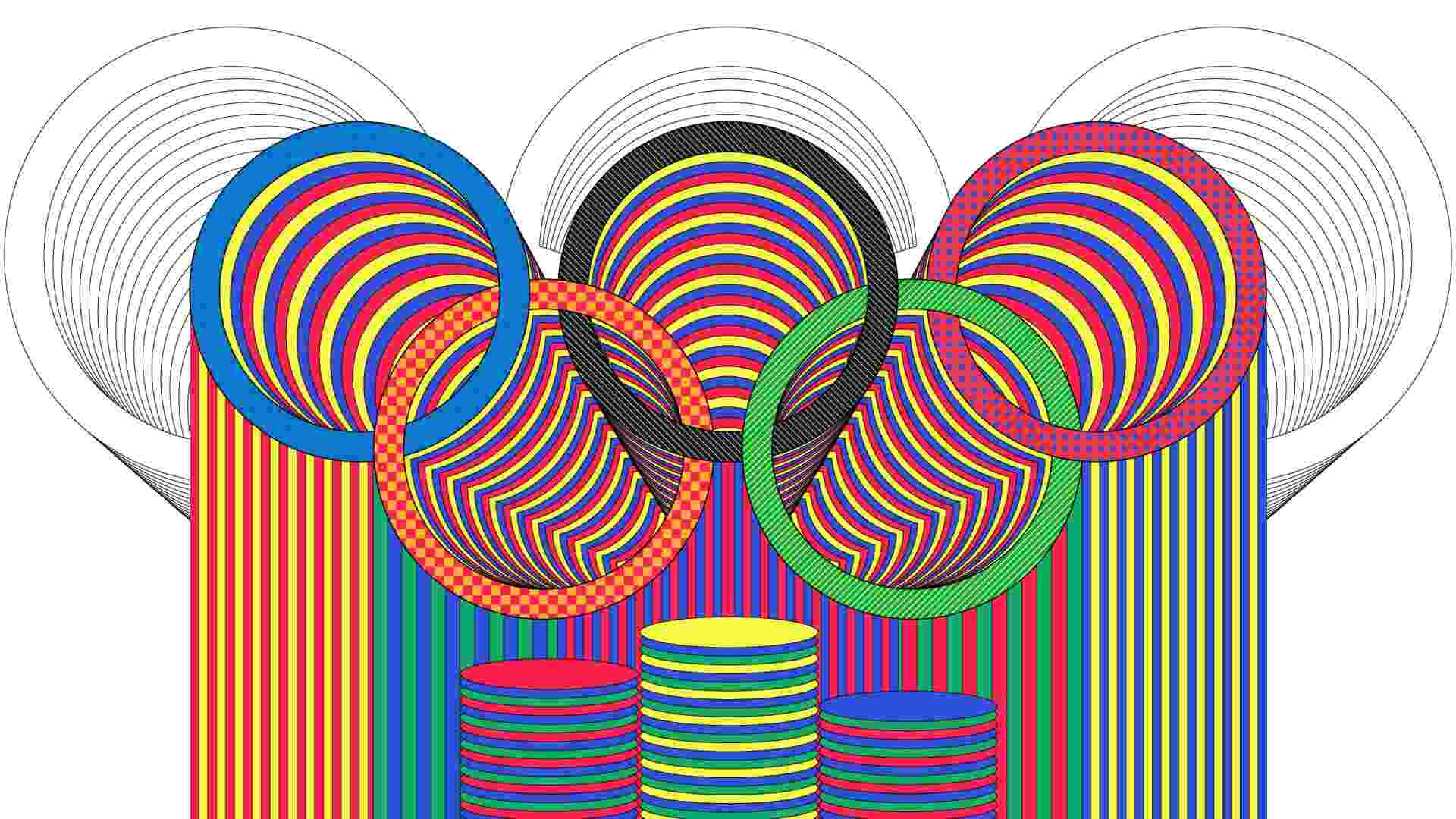
The 2024 Summer Olympics are here, baby. The swimmer Ana Marcela Cunha is hovering in the Seine River, ready to glide. The cyclist Tadej Pogačar is clipped into the pedals of his bike, poised to ride. And the runner Eliud Kipchoge is standing with the Eiffel Tower in the distance, primed to go. Moments before the starting gun fires, each athlete’s mind is on lock. Their surrounding competitors melt into a slurry of jerseys, brightly-colored and nothing more than go-juice for the champion’s mind.
Boom. Let the marathons of swimming, cycling, and running begin.
As a marathon runner and the creative director of Fast Company, I’m obsessed with the mental traits shared between gold medal athletes and artists. Sure, they might have rolled the dice and landed on a lucky gene pool. But what’s their mental game for sustaining hours of running or painting? My curiosity led me to write Creative Endurance, a book where I interview 39 top artists and athletes, giving you the bottom line on their mindsets for success.
One of the athletes I interviewed is Billy Demong, who scored Olympic gold for the U.S. in Nordic combined skiing in 2010. Demong won for the Large Hill event, where the competitor begins with a ski jump, rocketing up to 125 meters in the air and then propels into a 10-kilometer ski race. While I can’t ski to save my life, in speaking with Demong, I learned about fun mental games that can be applied to creative tasks. Here’s how to make his training work for you.
1. FORGE YOUR FOCUS
When Demong snagged Olympic gold, he was dialed in for 25 minutes and 32.9 seconds of intense skiing. In order to build his concentration, he’d spend more than two hours running on a treadmill. “I trained longer and harder than the races themselves,” he says. Demong’s strategy for strengthening his mind? He’d draw a dot on a Post-it note and tack it on the wall in front of the treadmill. “I would just stare at it and see how long I could keep my focus,” he says.
Creative charge: Zero in on a single part of a project. Yuko Shimizu, an illustrator who recently created the artwork for the Shogun soundtrack, will focus on one aspect of an illustration—such as drawing leaves on a tree—and ignore everything else on the day’s to-do list. “This keeps me calm,” Shimizu says. It also keeps her from sweating over what she isn’t doing.
Action item: Think about how you can break a project into smaller tasks; ones that can be knocked out in a day.
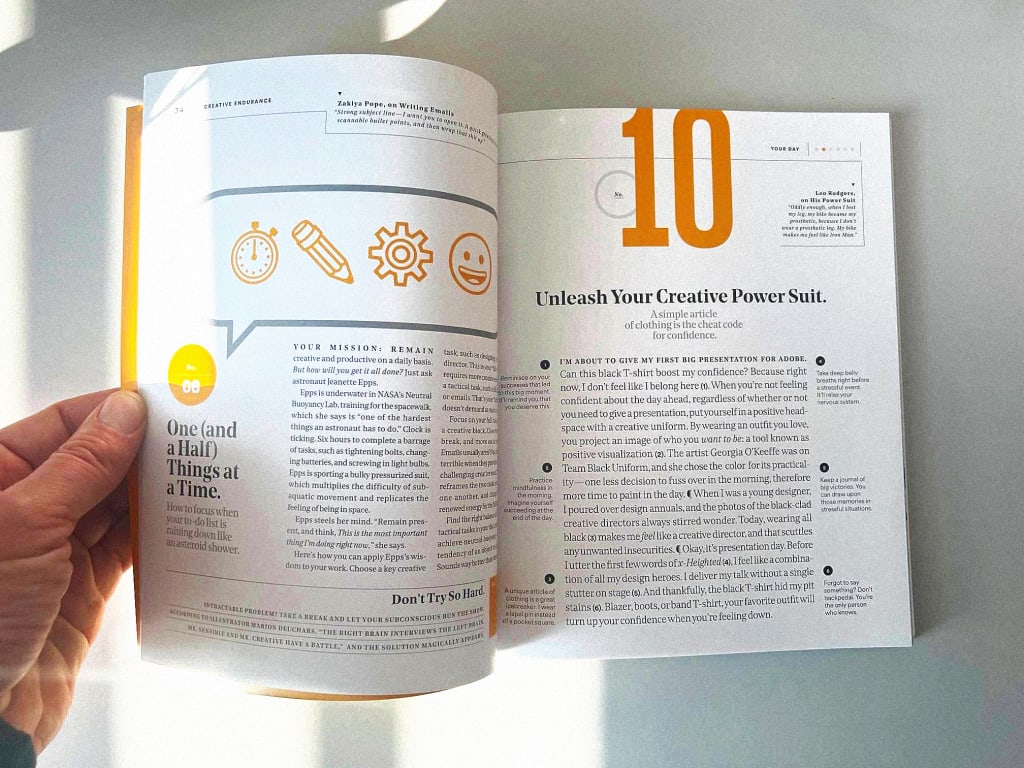
2. EMPLOY CROSS-TRAINING
Nordic combined skiing requires raw power for the ski jump and jet speed for the cross-country race. To boost Demong’s performance in both categories, he stacked cycling on top of his ski-training regimen. However, time on the bike didn’t pay off right away. “In the short term, cycling made me less flexible,” he says. Over time, hours of low-impact cycling was money in the bank for his quadricep strength—minus the stress on his joints. Demong adds, “I ultimately became a better skier because of [cycling].”
Endurance upgrade: Uplevel your day job with complimentary activities. Meet Peter Yang, a lifestyle photographer responsible for pics of everyone from President Barack Obama to BTS, who takes Gaga dance lessons. Unrelated to Lady Gaga, this Israeli style of dance emphasizes internal sensations, which helps performers tune into their bodies. Yang applies these insights on set, as he directs his subjects to find their best selves on camera.
Action item: Check into your workplace’s education budget—you might be able to expense a class to boost your daily creativity.
3. GAUGE YOUR LIMITS
To keep his physical engine running tip-top year-round, Demong adhered to a sustainable training plan. His trusty cycling workout: 12 repetitions of four-minute sprints at the peak of his aerobic capacity. “It sucked,” he says. “But if I could sustain that pace, and not go any slower or faster, I knew I’d be good for the Olympics.” On race day, Demong was able to modulate his skiing speed like the gas pedal on a car, flooring it for the last few victorious minutes.
Creative charge: Let’s apply this idea of self-awareness to writing. In the past, I built up my writing endurance through classes, where the assignments were 500 words each. When I need to speed, I’m able to write 2,000 words a day. But if I try to push beyond that, my sentences are as coherent as slushy snow on a warm day. By gauging my limits, I’m able to develop a plan for writing the first draft of a book. I take the final word count, and divide it by 2,000—that’s the number of working days it’ll take me to reach my goal.
Action item: How can you measure your daily creative output? If you’re a designer, that might be the amount of icons. For an animator, that could be the number of storyboards.
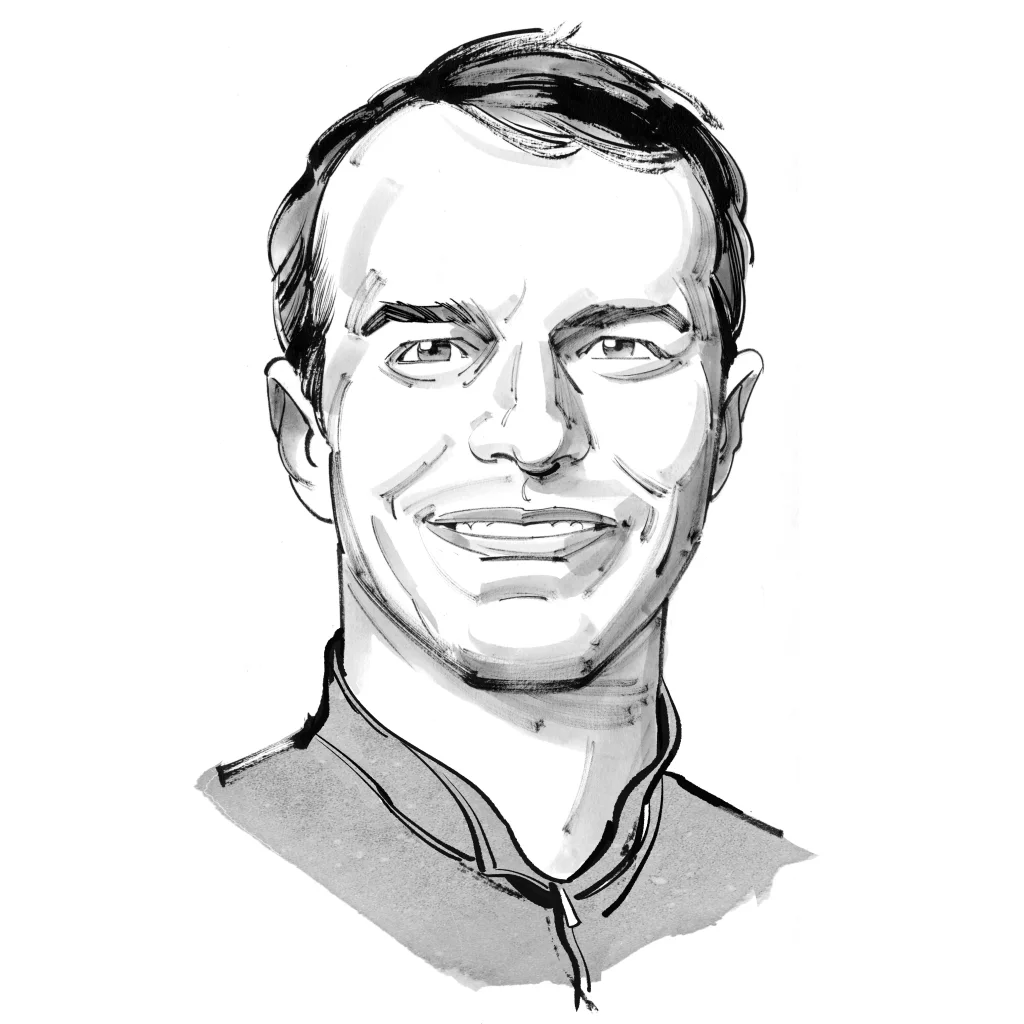
4. HARNESS NEGATIVE FEEDBACK
While cross-training was a necessary ingredient for Demong’s success recipe, he had a coach who didn’t believe in his cycling practice. Demong’s coach told him, “You’re going to fail,” worrying that cycling made him too heavy for ski jumps. In Creative Endurance, I asked Demong how that feedback landed. “I like proving people wrong,” he says. “I like being the underdog.” After three unsuccessful Olympic attempts in Nagano, Salt Lake City, and Turin, Demong won gold with his fourth attempt in Vancouver in 2010.
Endurance upgrade: Whether you’re at the Olympics or in the office, remaining optimistic will lead you to long-term success. Zakiya Pope, a principal behavioral designer at TIAA, pitches big projects that don’t always pan out. While at Chase Bank, she worked on the prototype of a savings app called Finn. Initially, the C-Suite rejected her team’s pitch. But looking back, she says, “I grew more confident about telling a story and presenting a case for the [work].” Years later, Chase used an automated savings feature from the pitch. “It felt great to see how they used valuable pieces,” she says.
Action item: Consider a project that didn’t turn out the way you wanted, and write down three things you learned from the experience.
5. BREAK YOUR ROUTINES
Flexibility was the key to Demong’s Olympic win. As he was traveling for Olympic qualifiers, Demong’s schedule was as predictable as a leaping lantern fly. To stay on track, he developed a checklist of the skiing, cycling, and running workouts for the week, but remained flexible on time and location. “It didn’t matter if I got stuck in an airport,” he said. “I’d run backward on a moving walkway to get a workout in.”
Creative charge: In our hybrid work environment, utilize your location as a tool to switch between tasks. Marion Deuchars, a U.K.-based artist, might write for hours in her studio, but then depart to illustrate for an hour in a noisy coffee shop. “I find the distraction to be quite stimulating,” she says, comparing it to a tennis player who feeds off the energy of the crowd.
Action item: Unable to leave your home or office? Shift rooms as you switch tasks.
6. DELEGATE, DELEGATE, DELEGATE
In their early days of ski training, Demong and his teammates would try to outrun each other on the powder. “We’d be blown to pieces by the end of the week,” he says. After a few months, they instituted a system where a designated person would lead the team at a fast yet sustainable pace, also known as drafting. This upgrade in team dynamics was a crucial factor for their Olympic success. In the final few minutes of their big win, Demong and his teammate Johnny Spillane took turns sprinting in the front, breaking down their competitors until Demong crossed the finish line.
Endurance upgrade: This concept of drafting can be applied to the workplace. Here at Fast Company, every issue of the magazine features a large package such as Innovation by Design and Most Innovative Companies. I’ll alternate which of my two art directors will design the package for the current issue, allowing one to take the lead and the other to recharge for next issue’s package.
Action item: How can you lay out a timeline of upcoming projects for your team?
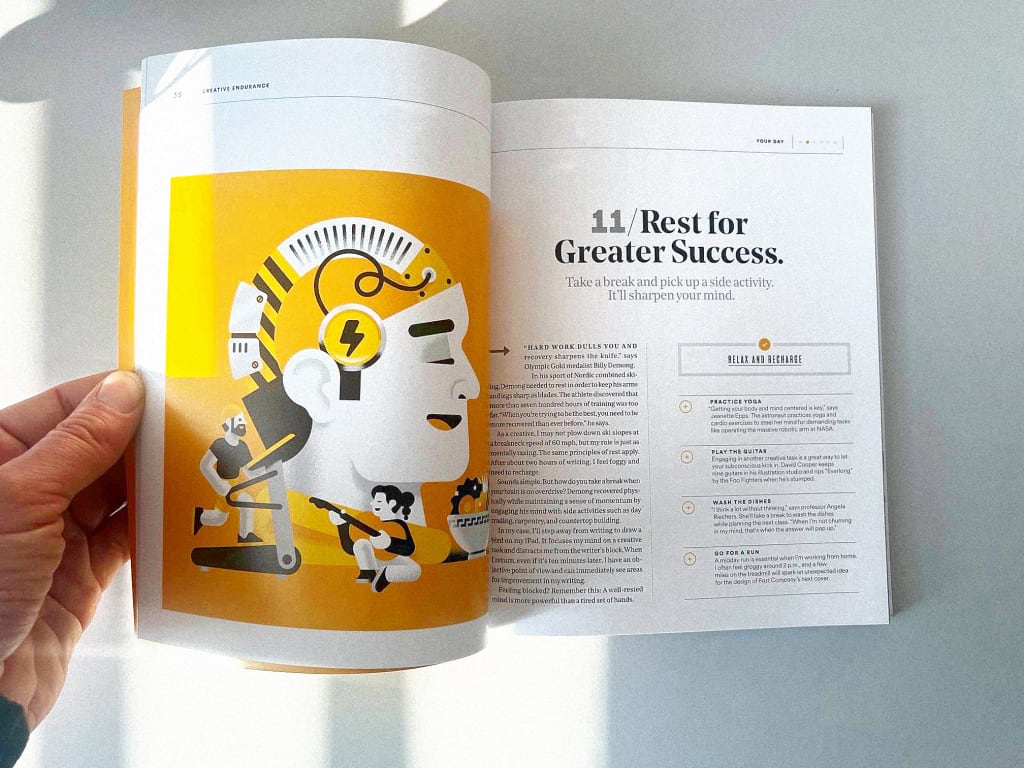
7. TAKE REST SERIOUSLY
Over the years, Demong fine-tuned his fitness, ultimately landing on 700 hours of exercise—any more and he’d risk blowing a gasket from overtraining. However, like many successful people, Demong wanted to stay active. In order to maintain a feeling of momentum, Demong picked up day trading, carpentry, and countertop building. He recovered physically while staying mentally engaged. “Hard work dulls you,” he says. “Recovery sharpens the knife.”
Creative charge: Keep the vibes creative while you relax. Stroll into the studio of Marion Deuchars, and you’ll discover a table with stones sitting on top. For a mental break, Deuchars will stop at the table and paint a colorful band or pattern on a stone. “There was a point where I had to put them away,” she says. “It was so joyful and would distract me for hours.” In 2021, some of these painted stones were exhibited in the London Design Festival.
Action item: Send a calendar invite to yourself where you step outside for a 15-minute walk.
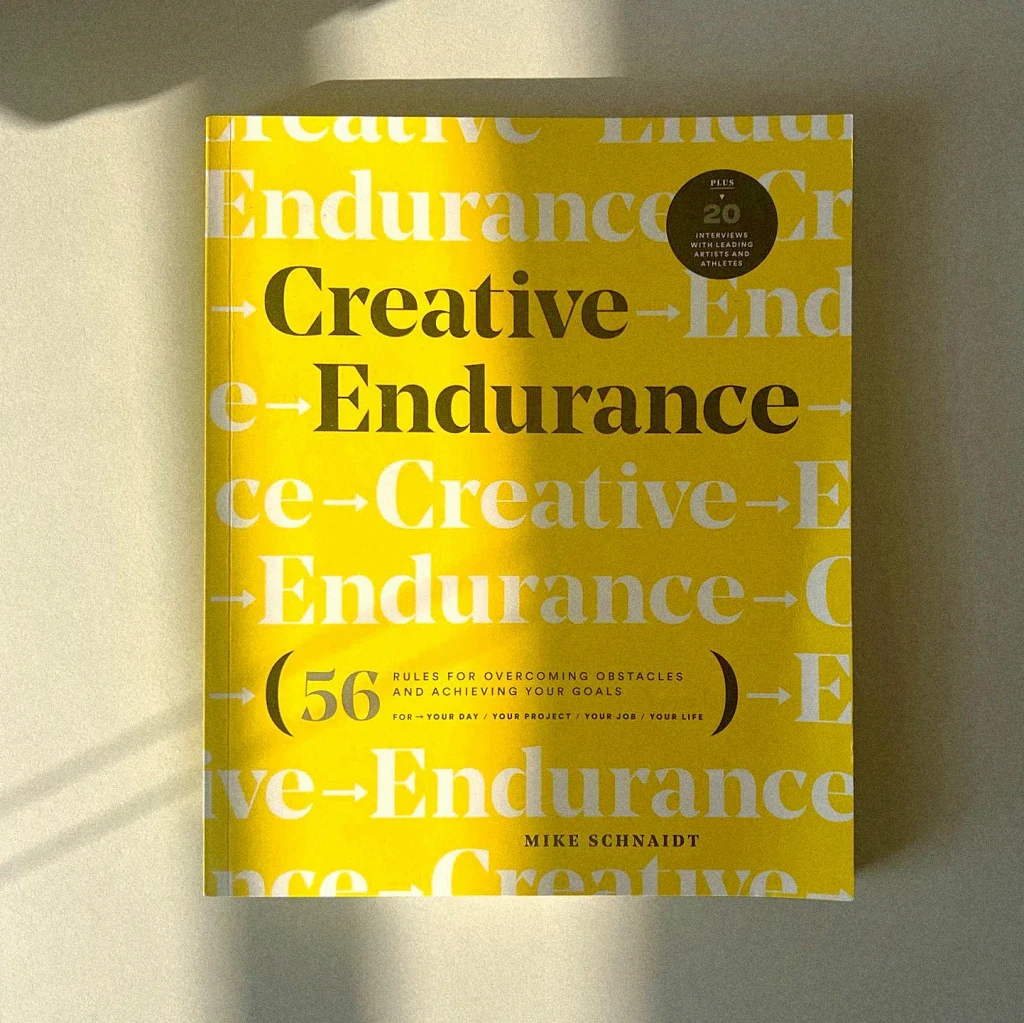
Ultimately, Demong’s winning strategy comes down to focus, flexibility, and chilling the f* out. To score more secrets from winners, ranging from architects and animators to chefs and football players, pick up a copy of Creative Endurance on Amazon or wherever fine books are sold.





































